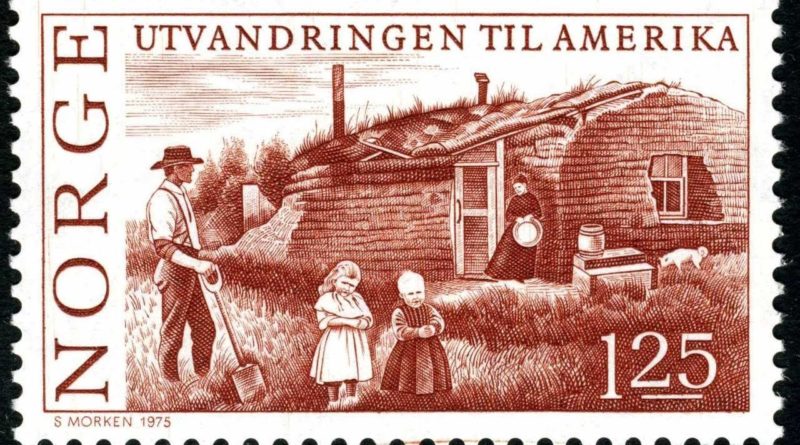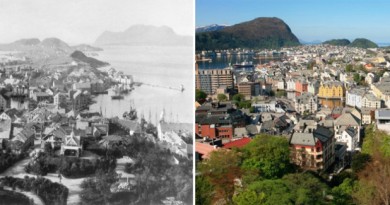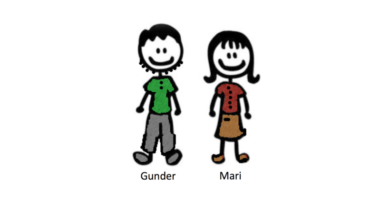Video Wednesday: Imsdalen – A Story about Norwegian Immigration to Minnesota
A film by Brad Imsdahl where he presents the history of his ancestors both in Norway and Minnesota
Linked from YouTube channel Catbox Studios
Norway 2016 – Video 20 of 21
https://www.youtube.com/watch?v=ppmWeAcMhaA&list=PLapnpS7sdpP2ITd9Ecjpo6-ySLJX9Ljd-
My great grandparents, Peder and Marit Imsdahl came from Imsdalen, a remote valley located north of Lillehammer in Oppland County Norway. In the 1880s, they immigrated to a small farming community in west central Minnesota.
Back in the early 1970s, my Uncle Bob and Aunt Annabel were friends with a family who had a foreign exchange student from Norway that went to New London High school in Minnesota. The exchange student’s name is Einar Odden, and his wife’s name is Bodil. Today they live north of Lillehammer, not far from Imsdalen. Einar is a journalist for the Gudbrandsdølen Dagningen, a Norwegian newspaper published in Lillehammer. He knows a lot about the history of Imsdalen and the families that once lived there. I got in touch with Einar before going on this trip, and he agreed to take us on a guided tour of Imsdalen.
Between the mid-1800s and the early 1900s, nearly 25 million Europeans immigrated to America. About 800,000 immigrants came from Norway, representing about one third of that country’s population at the time. This video explores the reasons why so many Norwegians immigrated to Minnesota, and why my great grandparents changed their name to Imsdahl after immigrating.
A film by Brad Imsdahl
Music:
King Porter Stomp
Written by Jelly Roll Morton and performed by Brad Imsdahl
Solveig’s Song
From Six Song Transcriptions, Opus 52, No. 4
Written by Edvard Grieg and performed by Brad Imsdahl
Note from Martin: While I am sure the renaming patterns presented in this video is correct when it comes to Brad’s Family, it should be noted that these patterns varied through time and from area to area.






As your note indicates, the naming pattern may be correct for this fellow’s family, but for my lineage and those of the various spouses of parents, grandparents, gr-grandparents and assorted cousins that I’ve researched in Norway, the naming order was nearly carved in stone. Even exceptions seem to have had rules. Eldest son named for the father’s father; second son named for the mother’s father. Eldest daughter named for the father’s mother, second daughter named for the mother’s mother. After that, the children were named for the parents, aunts, uncles, or names chosen arbitrarily (depending on how large the family was).
Exceptions: sometimes the illegitimate first-born son was named for the mother’s father, or the father, or seemed to be randomly chosen for no discernible reason. The first-born illegitimate daughter might be named for the mother’s mother, or the name might be whatever name the mother chose. If the couple was already planning on being married in the future and the child was born before the official marriage date, the original naming pattern might be used and continued after they married. That also means that if the couple had fathers or mothers with the same name they had two children of the same sex with the same name, although the record-keepers might note an elder or younger designation. Also, if/when a child died, the next child of the same sex was named for the dead child, or, if the opposite sex, the male or female version of the name might be given to the next child after the child who died. If a spouse was a widow or widower, and young enough to marry and have more children, their firstborn of the same sex was given the name of the dead spouse.
The naming traditions in Norway were the strongest and most stringently followed, sometimes even after people arrived in the US. The naming patterns in Sweden and Denmark might use some of the same traditions, but in a very haphazard manner, and no naming traditions were as firmly followed as the Norwegian naming traditions – in my experience, anyway. I’ve done research in all three Scandinavian countries since my own ancestors were from all three countries (plus four others), but I’ve additionally done research on Norwegian branches that married into my family so I’m very familiar with Norwegian records.
I suspect the fellow in the film either didn’t do his own research or he or someone else who did the research in his family ignored an “illegitimate” designation in a birth record for him to arrive at his conclusion that the eldest son was named for the mother’s father. Otherwise, it may be that the mother’s family had the higher social status and the eldest son was, indeed, named for the mother’s father in that one family in at least one generation. It would be interesting to see the documents to find out the truth.
Hello Bev
Thank you so much for visiting and for sharing your insightful comments.
I wish you and yours a very Merry Christmas!
Martin
I find the film is very well done and informative. Among the many things I’ve learned over the years about traditions in Norway is that the way things were done in many cases were dependent on the part of Norway one was living. In years past because of geographical challenges and simpler travel methods, people were more confined to the area in which they lived so their customs and dialects reflected where they lived. This may account for the naming pattern followed by the people Brad Imsdahl was presenting in his film. Brad’s film can be very helpful for those who are just beginning to research their Norwegian heritage and help to give them a better understanding of what to look for when researching ancestors. Understanding the patronymic system used prior to the early 1900s is crucial, as is understanding how the farm name was used as an address/person identifier. Not knowing the farm name or how it could change as people moved from one farm place to another before a law was passed making a permanent surname mandatory, can easily throw an unknowing researcher’s quest far off the track.
Since the comments to the you tube video are turned off I will comment to Brad here: Good job, Brad! I hope others who view the film take notice of how well the Norwegian fellow, Einar, spoke English. Of course they have the advantage of hearing English on a daily basis (television/movies) and learning it in school beginning at a very young age, but even so, it is impressive to think that one can travel to Norway and be able to communicate without having to struggle to communicate. I was so impressed during my 1st trip to Norway in 1996 that I dedicated myself to becoming fluent in Norwegian. I thought I was doing pretty good and then on a family reunion trip to Lofoten 3 years later I discovered that the various regional dialects can make understanding Norwegians very difficult, plus the fact that there are dialects based on nynorsk and in other parts based on bokmål. Uffda! 🙂 Becoming fluent på norsk became a big advantage/help throughout researching the bydebøker and church records when I began piecing together my Norwegian heritage, and the fact that all of my grandparents came from Norway allows me to focus my research to those places in Norway they were from.
Dave “Pete” Peterson
Hello Pete
Thank you so much for visiting and taking the time to share your insightful comment. Kudos to you for putting in the effort to learn the Norwegian language.
Jeg ønsker deg og din familie en rigtig god Jul og et godt nytt år!
Martin
Takk det samme, Martin!